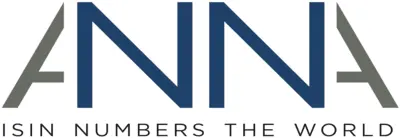First published on TabbFORUM, 25 June 2025. A universal language Consensus-based financial standards developed by…
ISIN & LEI Linkage: Maximising standardisation and data integrity
The issue of data integrity has risen up the agenda for the majority of financial institutions with a desire to improve data quality and get a better handle on risk management, while minimising the chances of market abuse through improved anti-money laundering (AML) and know your customer (KYC) checks. It was to this end that the Association of National Numbering Agencies (ANNA) and the Global Legal Entity Identifier Foundation (GLEIF) launched a joint initiative last year to start linking International Securities Identification Numbers (ISINs) and Legal Entity Identifiers (LEIs) for the benefit of the global financial industry. The initiative was established to help improve transparency, aid risk and exposure management, and facilitate industry in meeting various regulatory requirements. Essentially, for firms to ensure they obtain reliable data in order to better manage these challenges, they need to go to the source of the information – in this case it is the ISIN to LEI linkages now being provided by the National Numbering Agencies (NNAs).
Benefits of building links
First announced in September 2018, the cooperation between GLEIF and ANNA was created to improve the transparency of exposure by linking the issuer and issuance of financial instruments. The linkage, officially made available in April 2019, enables firms to aggregate data which clearly shows their financial instruments exposure in relation to an individual issuer and its related entities.
The ISIN-to-LEI relationship files are built upon a mapping process established by ANNA that is in the process of being certified by GLEIF. GLEIF’s Certification of Mapping service ensures that organisations that map the LEI to their own identifiers use methodologies and/or processes to do so accurately. The ISIN-to-LEI mapping table is freely available to all without restriction; links to the data are available on the GLEIF website and details of the NNA’s who have opted into the initiative are on the ANNA website, updated as and when new NNAs opt-in to the initiative.
There are numerous benefits of the ISIN-to-LEI linkage, as follows:
- Risk management: With the linkage, firms can now more easily monitor levels of risk management, off-balance sheet exposures and securitisation, and risk concentration with regards to the Basel Capital Requirements obligations. Firms are also able to attain a more holistic view across their entire organisation, including its subsidiaries, rather than this being achieved on a piecemeal basis
- AML/KYC: By attaching an LEI to an issuer, firms can be reassured that the issuer can be clearly identified, as the LEI and associated data have undergone a validation process as part of the GLEIS (Global LEI System)
- Regulatory obligations: There are a growing number of references within regulations that mention the use of the ISIN and LEI in partnership. In Europe these include: the Securities Financing Transactions Regulation (SFTR) introducing requirements to improve transparency and monitor the risks associated with the securities financing transactions market; MiFID II – the cornerstone of the EU’s regulation of financial markets for the improvement of protections for investors; the European Market Infrastructure Regulation (EMIR) for the regulation of over-the-counter derivatives; the Central Securities Depositories Regulation (CSDR) which aims to harmonise the authorisation and supervision of central security depositories; and the Prospectus Regulation designed to reinforce investor protection by ensuring that all EU issued prospectuses provide clear and comprehensive information. Outside of the EU, Canada in particular has harnessed the ISIN and LEI partnership through implementation of the Investment Industry Regulatory Organization of Canada (IIROC) Rules Notice 19-0071, Amendments Respecting Client Identifiers, Universal Market Integrity Rules (UMIR) and the Dealer Member Rules (DMR)
- Data quality: By linking ISINs to LEIs, further reassurance is given to the quality of data in that representations of an issuer’s legal information are derived from a centralised LEI database which provides a uniform and consistent mechanism for identifying issuers across the globe
- Efficiency: Firms and investors stand to gain from operational efficiency given the fact they now do not have to conduct the mapping work themselves and can leverage a reliable, free and open data source.
Steady growth
While there are other identifiers out there for issuers and financial instruments, it is both the LEI and ISIN that are the primary entity and instrument identifiers within the ISO TC 68/SC 8
Reference data for financial services suite. In fact, it was precisely due to this reason, and because the two identifiers are complementary in nature, that ANNA originally supported the move to partner with GLEIF.
The initiative has proved popular, with 19 NNAs covering 23 jurisdictions having joined since launch, which is double the original figure. In addition, the unique matches between ISIN and LEI records have continued to grow steadily with linkages being provided to both newly assigned and pre-existing ISINs. As of the 1st May 2020, the file contains 4.8 million unique ISINs which indicates roughly 40% growth, linked to almost 68,500 unique LEIs, a growth of more than 190% since launch.
Moving forward, there are strong signs of future formalisation of the link between the two standards. It is nonetheless important to recognise that the standards themselves do not currently mandate the link for the ISIN and LEI, and that all linkage work is being proactively and voluntarily done by NNAs. There is, however, a proposal to formally embed the link as part of the upcoming ISO 6166 ISIN standard revision, which is being considered as part of the current ISO ballot for review and consideration by ISO members. The ISO 6166 ballot will close on 29th July 2020.
Reliable source
By linking the ISIN and LEI identifiers, firms stand to gain from improved transparency, risk management, and regulatory compliance. This can only serve to be reinforced by the proposed formal linkage of the ISIN-to-LEI relationship in the ISO 6166 revision, which is expected to be published in late 2020 or early 2021. In the meantime, ANNA will continue to foster standardisation through the undertaking of these efforts in order to assist the industry and provide a free, open solution. Indeed, the industry only stands to benefit by having this data made available to them directly and validated by a reliable source.
Media contact for ANNA
Lindsay Clarke
Streets Consulting
+44 (0)20 7959 2235
lindsay.clarke@streetsconsulting.com
About ANNA
Established in 1992 by 22 founding numbering agencies, ANNA is the membership organisation of national numbering agencies, which are operated by depositories, exchanges, government agencies, nationally central data vendors and other financial infrastructure organisations. ANNA also serves as the registration authority for the ISIN and FISN standards, under appointment by the International Organization for Standardization (ISO).
Under ANNA’s stewardship, the role of the ISIN in enabling global financial communications has been established worldwide. ISINs are issued today more than 200 jurisdictions worldwide. In addition, ANNA has developed the Derivatives Service Bureau (DSB), a fully automated global numbering agency to meet the operational and regulatory requirements of the over-the-counter derivatives markets. The number of national numbering agencies and nations working to establish national numbering agencies continues to grow each year, now surpassing 120 jurisdictions globally. For information about ANNA, its members and activities, please visit anna-web.org.



